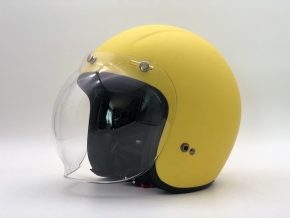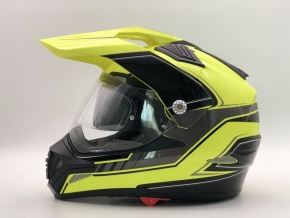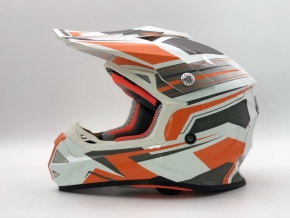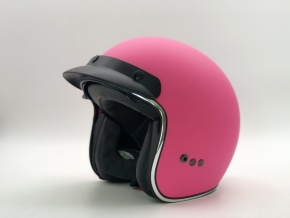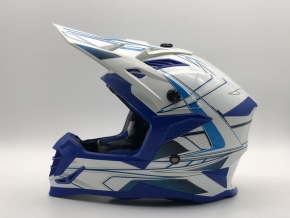Commercially available Motorcycle helmet manufacturer There are as many as a cow's hair, the price is different, and the quality is also uneven. It's inevitable that novices will feel dazzled, and I don't know how to start.
It is an unchangeable market rule that every penny is worth every commodity. High price does not necessarily mean excellent quality, but low price means no good products. First of all, remember this.
First, let's talk about the safety standards of helmets. At present, there are three safety inspection standards of motorcycle helmet manufacturers in the world, namely DOT standard, ECE standard and SNELL standard.
The DOT standard is the helmet inspection standard of the United States, which is the abbreviation of the United States Department of Transportation. This helmet safety standard is a mandatory market standard. All motorcycle helmet manufacturers sold in the United States market must meet this safety standard before they can be allowed to sell. The inspection standard includes three inspection methods: plane, hemisphere and puncture, which are carried out by the relevant departments of the United States. Due to its "ancient" history, this standard is no longer the safety standard for high-end helmets and is relatively backward.
ECE motorcycle safety inspection standard is the main standard for high-end helmets and one of the main standards for helmets produced and sold in the EU market. The safety level is stricter than DOT standard.
Finally, SNELL safety standard is a professional standard. Many professional drivers wear professional helmets that meet this standard, with stricter requirements and higher safety level.
In addition to the helmet shell, the common helmet shell materials on the market at present are mainly divided into thermoplastic, glass fiber reinforced plastic and carbon fiber materials. Thermoplastic plastic is not suitable for motorcycle helmet manufacturers, with poor impact resistance and the lowest price. If you like a helmet, but can't know the material of the shell, it is recommended to give up.
However, polycarbonate is also one of the thermoplastics. Its physical properties are better than ordinary thermoplastics, and its price is cheap. It is often combined with acrylonitrile butadiene styrene copolymer, which is a common so-called ABS engineering plastic material. The helmet shell made of this material has good impact resistance, Generally, it is the preferred shell material for middle and low end helmets.
Fiberglass is the common name of glass fiber. Its physical properties are better and more stable than ABS engineering plastics, and it can withstand the test of time. It is the first material for high-end helmets.
The carbon fiber shell is generally combined with the aramid Kevlar polymer material. The carbon fiber material has good structural strength, and the latter has excellent tensile capacity, so it is a perfect combination. It is not only high in strength, but also light in weight. The only disadvantage is that it is expensive. Generally, it is the combination of materials selected for high-end helmets.

The buffer layer is also the main component of the helmet. In a sense, the existence of the buffer layer prevents your head from being subjected to strong shock when hit, which is of great significance.
Most of the current Motorcycle helmet manufacturer The buffer layer of the helmet is made of EPS foam, but there is also a need to pay attention to it. A good helmet buffer layer should be composed of double-layer or multi-layer EPS foam. The outer layer is hard and the inner layer is soft, which can respectively absorb shocks with different strengths. Cheap helmets generally only tell you that it is the buffer layer of EPS foam, not how many layers are composed, It is the single-layer foam with high probability.
In addition, the lining usually does not directly play a protective role. Its function is to perfectly fit the helmet to your head shape, and play a role in fixing and improving comfort. Generally, the cheap helmet lining cannot be removed, so in summer, when the head sweats a lot, the lining will soon be soaked, Then the next day you have to continue to wear this smelly helmet, it is difficult to clean the sweat stains on the lining. All good helmet liners should be detachable, not only that, but also the sponge inside the liner can be removed separately. Although this design does not have any high-tech content, it will significantly increase the cost of manufacturers. Therefore, only those manufacturers who really put quality first will have such a design.
In addition to the size of the helmet, this can also identify whether a helmet is a product of conscience.
Generally speaking, most helmets have only one or two or three shell sizes. The interior is designed as SM, M, L, XL, 2XL, etc. according to the size of your head, which will significantly save the cost of mold opening. However, if your head size is too small, you will also share the shell with other helmets with larger head sizes, which is not very harmonious in appearance. Wearing this helmet, You will feel like a mushroom, and the weight of the helmet has also increased, while those larger helmets have to reduce the thickness of the buffer layer because they have to accommodate the same shell, which will lead to insufficient protection strength. Good helmets usually have a shell of one size, and each size has a corresponding shell, so that both weight and protection can be achieved.
A little more common sense, double D buckles are the best lacing for helmets. The lacing with this structure can withstand greater tension, while all kinds of quick release lacing are convenient, but their strength is poor. In extreme cases, they may not withstand the tension and fall off.
The full helmet has the best protection ability. Although it is not convenient to use, it has the best protection. All kinds of helmets, 3/4 helmets and half helmets can not compare with it. Try to choose full helmet to provide the best protection ability.
The weight of the helmet is very important. Overweight helmets not only indicate cheap materials, but also poor wearing comfort. Half helmets generally should not exceed 800g, cross-country helmets generally should not exceed 1200g, and full helmets generally should not exceed 1500g. Pay attention to whether the manufacturer has marked the weight of helmets. Generally speaking, helmets that dare to mark the weight of helmets are not inferior.



